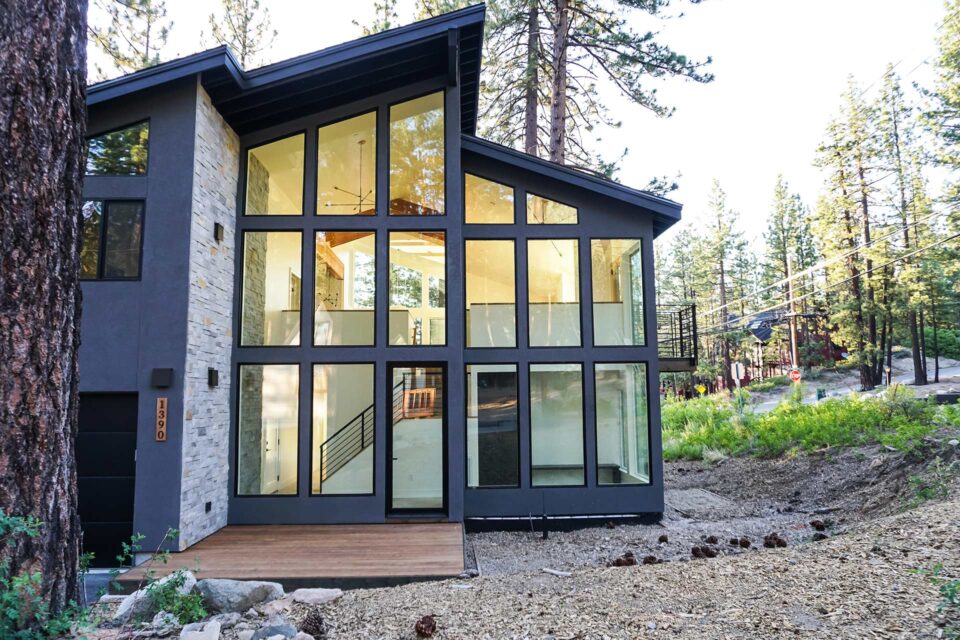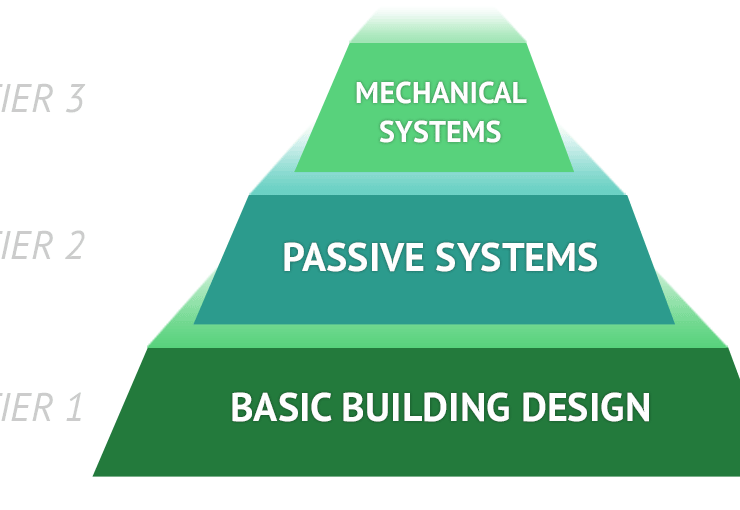We use a three-tier approach to designing efficient and effective heating, cooling, and lighting systems in our buildings.
Tier One is the basic building design itself, using the form and structure of the building to minimize heat loss in winter and heat gain in summer. The building form also has a large impact on the use of natural daylighting. This tier is achieved through the architectural design of the building and the appropriate decisions made here can greatly reduce the building’s energy loads and increase thermal comfort.
Tier Two involves harnessing natural energies through the use of passive systems (systems which do not require additional energy to operate). This tier also has a significant effect on the architectural design of the building with passive systems adding to the character and feel of the building and interior spaces.
Tier Three is the design of the mechanical systems that are used to compensate for the remaining loads on the building. The use of efficient heating, cooling and ventilation systems can further reduce energy use, but it is more advantageous to reduce loads through the first two tiers before relying on mechanical equipment.

Since the third tier, mechanical systems, is always designed to make up for the design deficits of the first two tiers the three-tier system is actually used in all building design. Unfortunately, most of the time it is not consciously considered. When the three-tier approach is not a part of the design process, buildings typically rely on larger amounts of fossil fuel energy to maintain acceptable comfort levels. When the three-tier approach is a central part of the design process, buildings ultimately use relatively little fossil fuel energy while maintaining optimum comfort levels.
The three-tier approach has applications in heating, cooling and lighting of buildings.



